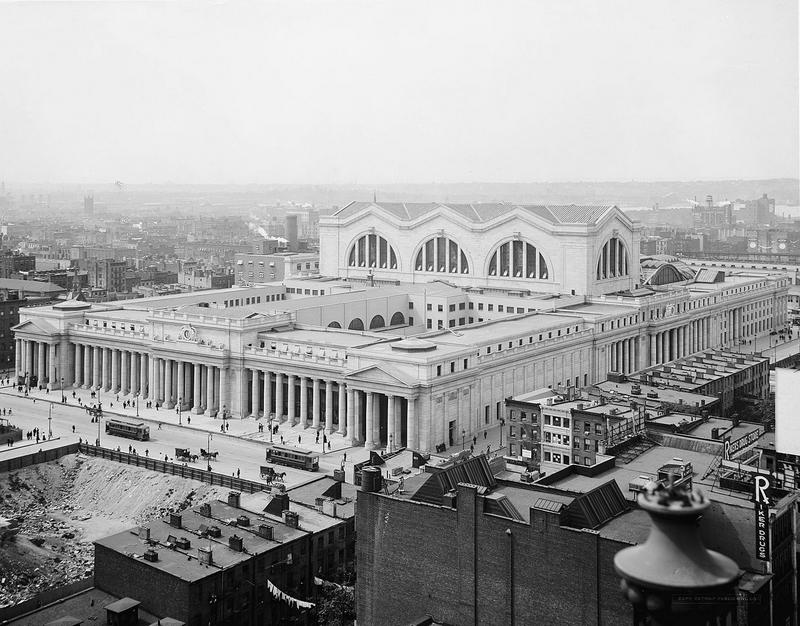The Demolition Of Penn Station: Losing Historic Architecture In The 1960s
By | October 12, 2021


Travelers Were Greeted By The Impressive Exterior
It had colonnades of unfluted columns which were modeled after landmarks like the Acropolis of Athens on the exterior, and the rest of the façade was modeled on St. Peter’s Square in Vatican City. The station had four entrances, with the most elaborate being at the intersection of Seventh Avenue and 32nd Street. At the entrance, a 7-foot long clock hung 61 feet above the sidewalk.

The Interior Did Not Disappoint
There were two carriageways modeled after the Brandenburg Gate in Berlin; these led to the two railroads that the station served. Within the station itself, Jules Guerin had created six murals which were each over 100 feet tall. Adolph Weinman designed four pairs of sculptures titled Day and Night, each accompanied by two stone eagles. Once inside the main entrance, there was a shopping arcade modeled after ones in Milan and Naples; it was lined with high-end shops. The arcade led to a staircase to take passengers to a waiting room.
The main waiting room, which stretched from 31st to 33rd Streets, included smoking lounges, newspaper stands, baggage windows, and telephone and telegraph booths. It had lower walls of travertine, and upper walls constructed to look like the lower walls. By the time construction was complete, the total cost was $114 million (equivalent to $2.3 billion in 2019).

Progress Brought The Station's Decline
After World War II, passenger traffic started to decline. The exterior was coated with grime by the 1950s, and some columns were covered by plastic when the building underwent renovation the late 1950s. The Pennsylvania Railroad sold the air rights and began to shrink the station; in the deal, the Railroad got a new, airconditioned station below the street as well as a 25 percent stake in the Madison Square Garden Complex. In 1962, plans for Madison Square Garden were announced.

Beginning To Dismantle A Landmark
Prior to the demolition, proponents argued that the cost to maintain the building was prohibitive. There were architects who argued to save the station, rallying with cries of “Don’t Amputate—Renovate.” Despite public opposition, the New York City Department of City Planning voted in January 1963 to move forward with demolition plans. and in 1963, the train shed and above-ground head house were demolished, clearing the way for Madison Square Garden and Pennsylvania Plaza to be built in the space. demolition of the above-ground station house began on October 28, 1963. Meanwhile, the concourses and waiting areas underground were renovated.

What Was Left And What Was Lost
All that remained of the original was the underground platforms and the train tracks, although there are some artifacts on the mezzanine level. Other artifacts have been relocated to various sites around the country, and some elements have been lost, such as pairs of the Day and Night sculptures, which were discarded in the Meadowlands. In late 1965, construction began on Madison Square Garden, and by late 1966, most of the old station had been demolished and much of the new one had been built. Controversy over the demolition continued and has been considered a catalyst for the architectural preservation movement in the United States. In 1968, Grand Central Station almost fell victim to the same fate, but New York’s Landmarks Commission preserved it.
